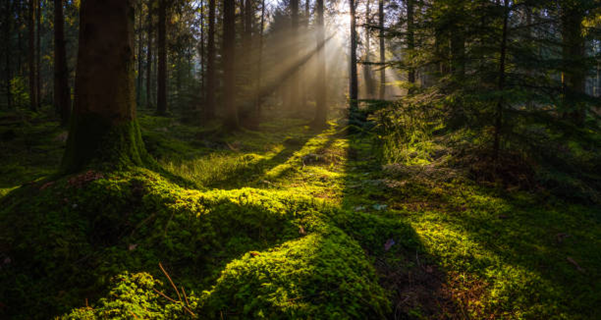
Surviving The Great Outdoors
The call of the wild stirs something profound within us. The allure of the great outdoors, with its beauty and challenges, beckons the adventurous.
However, venturing into the wilderness demands preparation, knowledge, and respect for nature’s power.
Understanding essential survival skills can mean distinguishing between a memorable adventure and a dangerous ordeal.
This piece probes wilderness insight: an aggregation of pointers and methods to securely assist you in traversing and prospering in the wilds.
Comparing BattlBox and Bespoke Post for the outdoorsman
For the outdoor enthusiast looking for a subscription box, two good options are BattlBox and Bespoke Post. BattlBox is tailored more for survivalists and preppers, sending tactical gear and survival tools each month.
Boxes are themed around scenarios like wilderness survival or urban escape and contain helpful items like fire starters, multi-tools, first aid kits, and emergency food.
For those focused on bushcraft skills and preparedness, BattlBox delivers indispensable gear.
For those seeking more than just survival, Bespoke Post capture the essence of outdoor lifestyle living. Beyond utilitarian gear, they tap into the soul of adventure with discerningly curated provisions. Boxes feature high-quality lifestyle goods.
While less survival-focused than BattlBox, Bespoke Post products greatly benefit travelers, campers, and outdoor enthusiasts.
Therefore, your subscription service depends on whether you want hardcore survival gear or well-crafted lifestyle items. Both can enhance the outdoors person’s next adventure.
Tips For Surviving The Great Outdoors
1. Choose Appropriate Gear and Clothing
Having the proper gear and clothing is the key to wilderness comfort and safety. Always pack essentials like a map, compass, flashlight, fire starter, and pocketknife, even if you’re going on a day hike.
Remember, sturdy hiking boots with ankle reinforcement and ample grip to prevent harm on irregular ground. In cold climates, don a water-resistant outer layer and insulated coat.
In hot climates, lightweight, light-colored clothing can help reflect heat. Carry a hat and sunscreen for protection against the elements.
Check forecasts and pack accordingly for expected weather. Having versatile gear prevents being caught off guard by changing conditions.
2. Plan Your Route
Before embarking on any wilderness trip, carefully plan where and how you will get there. Obtain a topographic map of the area and familiarize yourself with the terrain and geography.
Also, check with local ranger stations for permits, regulations, and hazard warnings.
Many park websites also have helpful trip-planning resources. Take time to understand your route to avoid getting lost or stranded.
3. Pack Emergency Supplies
In addition to your essential gear, always carry emergency supplies if the unexpected occurs.
A first aid kit with bandages, gauze, antibiotic ointment, tweezers, scissors, tape, and any personal medications is essential for minor injuries.
Also, carry high-calorie, non-spoilable foods such as protein bars, dried fruit, and trail blends. Have at least 2 liters of water on hand or carry a filter or iodine pills to sanitize water from natural springs.
Further vital equipment encompasses a whistle, flashing signal mirror, lighter, flint and steel, paracord, and pocket tarp.
4. Practice Safety Around Wildlife
While wildlife encounters can highlight trips, proper precautions are needed. Be aware of predators in certain areas and know how to deter attacks.
Making loud noises, waving arms, and throwing objects helps scare aggressive animals. You should not get close to wild animals. Give them ample space and an escape route.
5. Share Your Itinerary With a Responsible Person
Before going into the wilderness, share your itinerary with someone responsible who is not going on the trip. Provide details about your planned route, campsites, start and end dates, and expected check-in times.
Ask them to contact authorities if they are still waiting to hear from you by a predetermined time. Having someone monitor your progress and raise the alarm if something goes wrong can be a lifesaver in an emergency.
Taking this simple precaution allows you to adventure safely, knowing help can find you if needed.
6. Learn Wilderness Survival Basics
Survival skills are invaluable in the wilderness, where unexpected circumstances can arise.
Learn how to build fires using friction, flint, steel, or matches. Know basic first aid for injuries like cuts, burns, sprains, and insect bites.
Also, learn signaling techniques like mirrors, whistles, or fires to attract emergency attention. Practice improvising tools and shelter from natural materials.
Final Thoughts
Venturing out into the wilderness offers a crescendo of adventure and self-discovery in nature. Respect must, however, be accorded to the inherent risks.
There is, thus, a demand for adequate preparations to learn the survival skills that are necessary while out in the wilderness.
One should take key action points before embarking on this exciting adventure: learning navigation, obtaining shelter and water, learning essential techniques, and respecting wildlife and the environment.
Of course, in wilderness wisdom, it is not only a challenge of survival but a challenge to appreciate the environment. Listening, following tips, answering the call of the wild, and making tracks could be good one-time opportunities.
